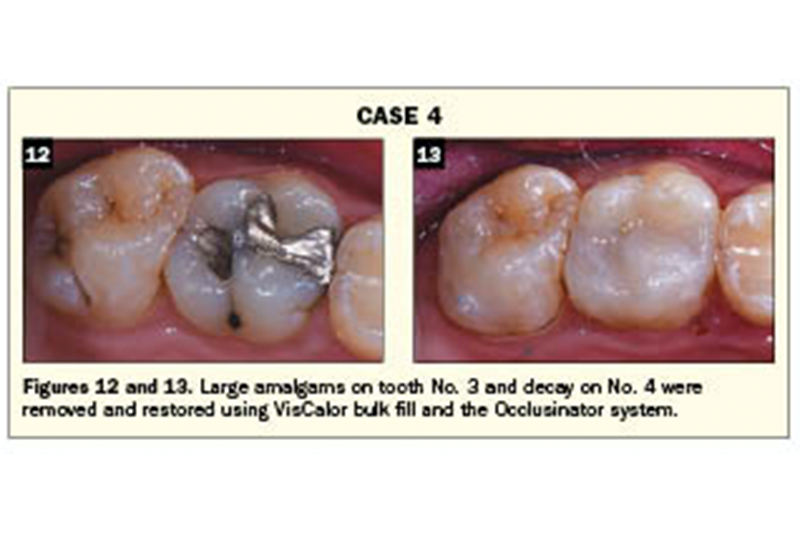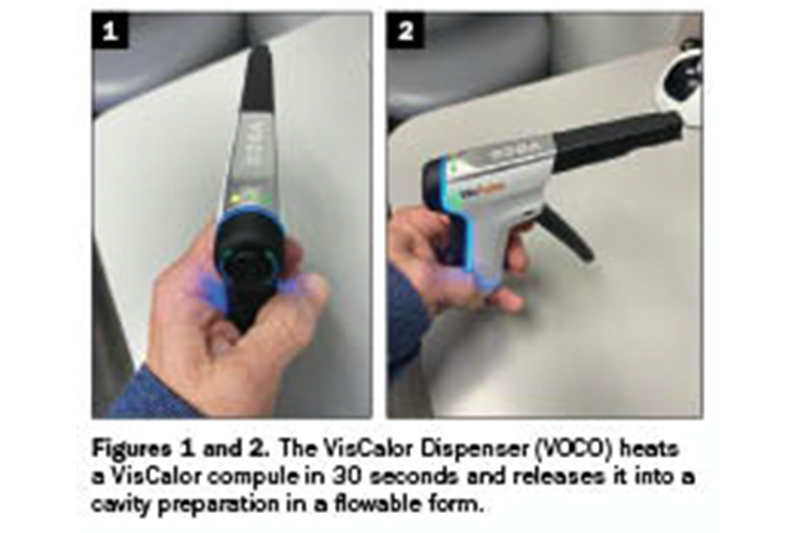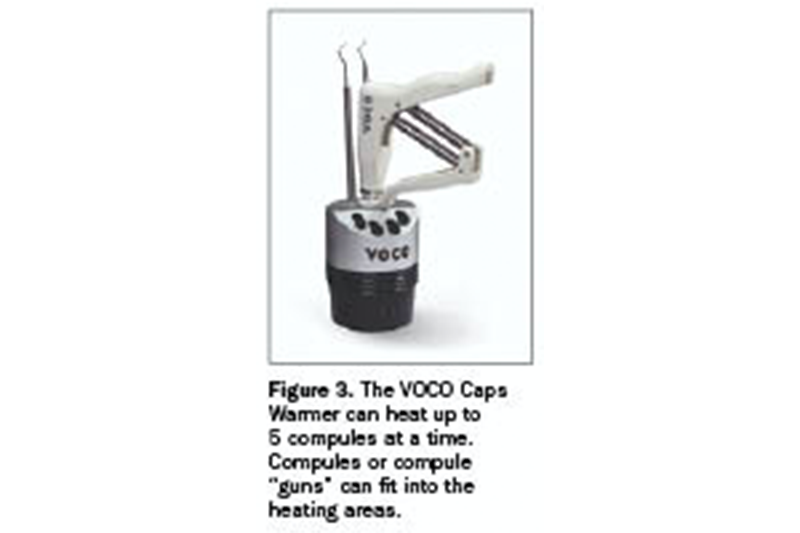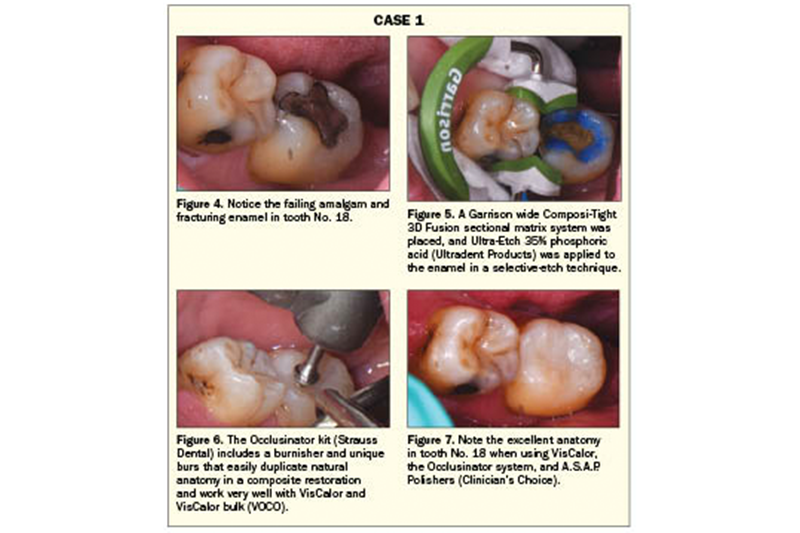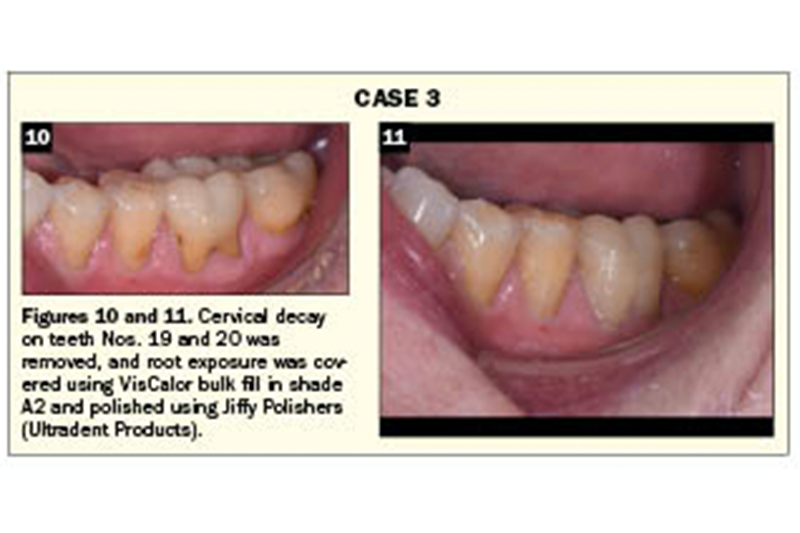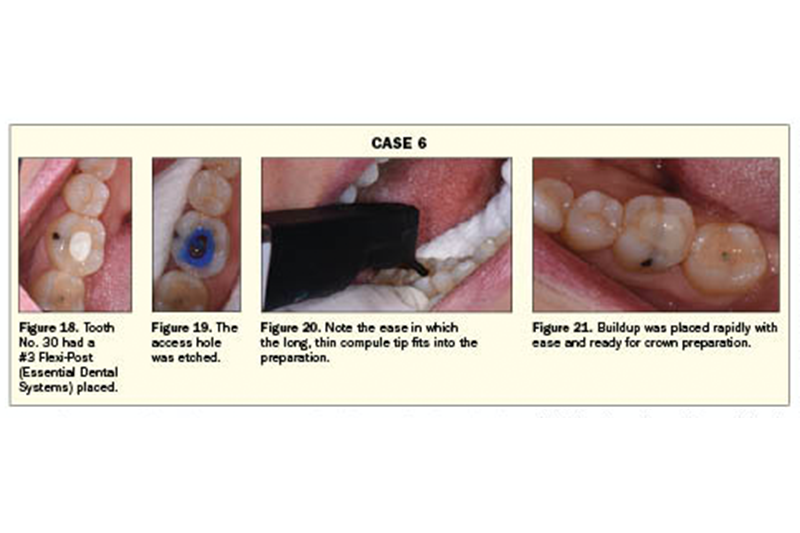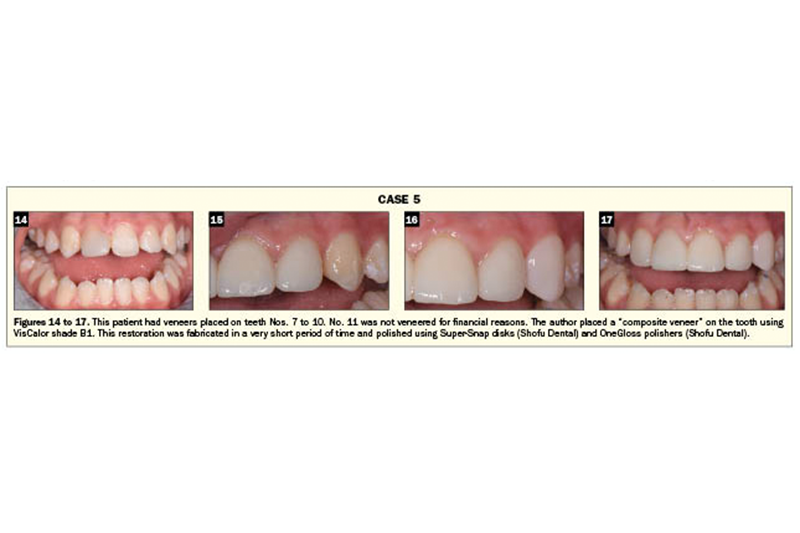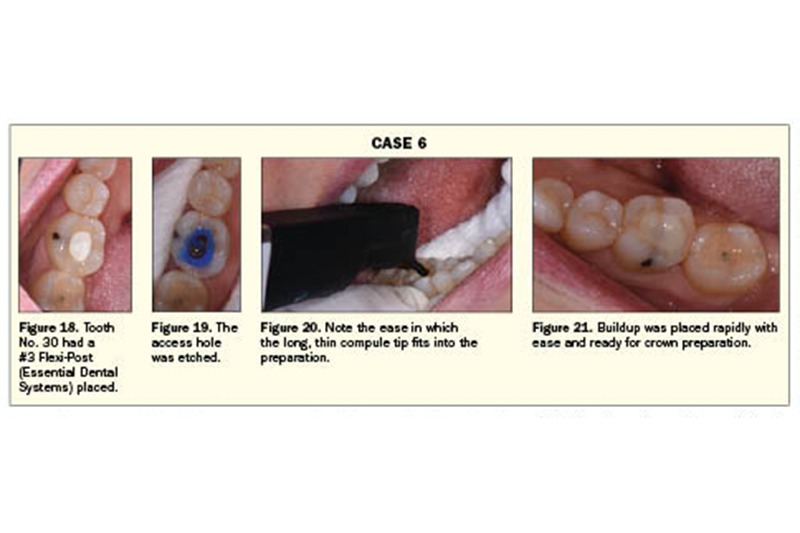INTRODUCTION
Advancements in the world of composite dentistry usually move at a snail’s pace. Companies attempt to leapfrog over each other by adding or subtracting shades, improving translucencies or opacities, or increasing working time. It’s rare to find a truly different product from others on the market. Therefore, the market-leading products tend to stay the same year after year.
Looking back at the past few decades, several products truly moved that market. SonicFill by KavoKerr created its own niche in 2001 by introducing a composite that launches from a handpiece connection to flow into nooks and crannies and becomes stackable with time. The ACTIVA line of products by Pulpdent introduced Bioactivity to the market in 2003. This concept has been advanced with ACTIVA products like ACTIVA Presto (Pulpdent), which act more like composites but share bioactive characteristics. Bioactive products create an “active,” rather than a passive, interface with the tooth.
The year 2019 brought OMNICHROMA (Tokuyama Dental America), a unique product using structural color instead of chemical color to match tooth shade. OMNICHROMA has begun a new trend in composite technology: fewer shades instead of more! Admira Fusion x-tra (VOCO) added bulk-fill properties and ORMOCER technology to the single-shade mix. Multiple other companies seem to be frantic in their quest to fall into the limited-shade group—a shocking change, as virtually all composite companies over the past 20 years chose to compete in a quest to have the most shades. Kuraray Noritake’s Clearfil Majesty ES-2 Universal and Kulzer’s “ONE” products are among the latest members of the single-shade club.
For decades, dental composites have fallen into 2 categories: flowable or condensable. Flowable composites easily fit into nooks and crannies, but they are difficult to polish and sculpt. Condensable composites are easily molded, contoured, and polished, but gaps and voids can form during placement due to their lack of adaptability. This article discusses a new type of composite material that relies on thermo-viscous technology (TVT), which allows the product to flow upon warming and become sculptable as the material cools.
That initial market changer of 2022 is VisCalor bulk (VOCO). VisCalor bulk is the first product designed specifically to be heated prior to application. It uses TVT to modulate a nanohybrid material that switches from flowable to sculptable using precisely dosed light and heat. VisCalor bulk was beta tested by several Catapult dentists in 2019. These dentists (this author included) offered a number of suggestions to VOCO with regard to changes we would like to see in the material. VOCO made the critical decision to make the recommended changes before the US introduction was scheduled. This strategy by VOCO is to be commended and recommended to companies before they move forward to place products within the US market.
VisCalor bulk, and now the entire VisCalor family of products, has added a totally new monomer system with a lower melting point than other products as well as a silane coating that allows the monomer to become a lower viscosity when warmed.
DISCUSSION
The preheating of composites is not a new concept. Physical properties are said to be enhanced, including microhardness and shear bond strength.1 Improved flowability may result in better adaptation to marginal areas due to enhanced photoinitiator efficiency from the increased temperature.2 This lowered viscosity can theoretically force monomers apart to establish increased flow and improved adaptation to tooth walls and decreased microleakage.3
VisCalor bulk works like other bulk-fill composites on the market with some improvements: It has a 4-mm depth of cure, an 83% fill rate, and very low shrinkage and wear. Curing time is 10 seconds for the universal shade and 20 seconds for shades A1, A2, and A3. VisCalor (universal) has a depth of cure of 2 mm, and curing time is 10 seconds for all but the OA2 shade, which has a curing time of 20 seconds.
Both VisCalor and VisCalor bulk have an added benefit: an “easy-access tip” that is longer and thinner than those for other composites. It easily reaches the full depth of even the thinnest proximal box.
VisCalor and VisCalor bulk are specifically engineered to be heated prior to use. VOCO has created 2 heating systems to create the required flow and sculptability of the products. The first is the unique VisCalor Dispenser (VOCO) (Figures 1 and 2). Compules are placed in the futuristic, gun-like dispenser; heated for 30 seconds; and dispensed directly into the cavity preparation. VisCalor stays in a flowable form in the Dispenser for 2 and a half minutes. The VisCalor Dispenser can also be used with other VOCO composites at different settings.
The second heating system is the Caps Warmer (VOCO) (Figure 3). This device can heat up to 5 compules at a time, which are subsequently placed in a conventional composite caps dispenser to dispense them into the cavity preparation. VisCalor bulk and VisCalor are specifically engineered to be heated in the VisCalor Dispenser or VOCO Caps Warmer. Once the compule is transferred to a conventional composite caps dispenser from the Caps Warmer, it has 30 seconds of working time.
Other composite warmers have been on the market for a number of years. For example, the Calset Warmer for composites, introduced by AdDent, includes interchangeable compule and dispenser gun trays. According to the manufacturer, it takes 10 minutes for the unit to reach proper heat and 2 to 3 minutes to warm a compule to a target temperature of 98°F to 155°F.4 Benefits include decreased polymerization time and increased composite flow for most composites.5 While these composites gain these benefits from the Calset and other warmers, the composites mentioned are not specifically engineered to be warmed.
The VisCalor system adds these benefits when compared to other attempts at sculptability and flowability:
1. The entire architecture of the system is designed for a phase change from flowable to a thicker, more manipulatable product. Other products are not designed this way, and warming may negatively affect the product and results. Negative changes from materials not intended to be warmed may include increased shrinkage. VisCalor is designed to avoid shrinkage issues and shows lower shrinkage than many composites.6
2. There is no need to sacrifice a handpiece attachment as you do with SonicFill 3 (Kerr Dental)—an excellent product, but this can be a difficult compromise for dentists (as it was for the author).
3. A base is not needed under VisCalor, so additional steps and additional time can be avoided during a composite procedure.
4. The use of a single compule stored in a sealed pouch, which is beneficial for disinfection protocols.
5. VisCalor bulk and VisCalor can be used together for virtually every composite procedure from Class I restorations to full facial bonds to post and core buildups.
CASE REPORTS
Case 1 (Class II, VisCalor)
A 64-year-old male patient appeared at the office with a failing amalgam restoration on tooth No. 18 with obvious fractures on the mesial marginal ridge (Figure 4). There was amalgam seepage into nearby enamel. VisCalor bulk or VisCalor could have been used for this restoration. VisCalor bulk can be used in 4-mm increments, so the restoration could have been placed in one application. The bulk material is somewhat more translucent, as are virtually all bulk-fill products in the marketplace. A decision was made to use the universal product, which is more opaque and therefore, more appropriate to mask the stain underneath.
The amalgam was removed using a 556 stainless steel carbide bur. Decay and stain were removed using No. 4 and No. 6 round burs, and a caries detector was used to confirm that all decay was gone.
The preparation was altered to include a bevel on all cavosurface areas. The cavity preparation was then treated with Consepsis Scrub (Ultradent Products). A Composi-Tight 3D Fusion sectional matrix system (Garrison Dental Solutions) was placed after a Composi-Tight 3D Fusion Wedge (Garrison Dental Solutions) and band were placed (Figure 5). The green Composi-Tight 3D Fusion matrix is particularly wide and is an excellent option for this wide cavity preparation necessitated by the marginal ridge fracture. Composi-Tight 3D Fusion Wedges are soft and flexible. This makes contouring easier and prevents bleeding, which typically occurs with other systems. A blue wedge was a perfect fit for this preparation design.
The author prefers a selective-etch technique for most restorations rather than total-etch, which etches dentin as well as enamel. The enamel present was etched using Ultra-Etch 35% phosphoric acid (Ultradent Products) for 15 seconds. All treated enamel and dentin were then coated by Futurabond U (VOCO). The bonding agent was “rubbed in” for 20 seconds and then light cured using the Bluephase Style curing light (Ivoclar Vivadent).
A shade A2 VisCalor compule was placed in the VisCalor Dispenser as the adhesive was curing. At that point, a 30-second warming cycle was initiated. After warming, the dispenser was readied to apply the material into the cavity prep. The ultra-long, ultra-thin compule tip was the perfect design for this deep mesial box, and 3 mm of Viscalor Bulk was applied. The material was condensed into the box; very soon after placement it becomes condensable. The Bluephase Style light was used to cure this initial batch of material for 10 seconds. A second portion of material was then added (the material in the Dispenser was still flowable) to complete the restoration.
The author has discovered a condensing system that works beautifully with VisCalor. It is called the Occlusinator (Strauss Diamond) (Figure 6), and it includes a condensing instrument and a kit of burs that easily form excellent anatomy for the restoration. The Occlusinator burnisher helped create anatomy that matched the remainder of the natural tooth structure. The Occlusinator burs were then used to create the final anatomical design. Finally, A.S.A.P. Polishers (Clinician’s Choice) were used to create the final anatomy (Figure 7).
Case 2 (Class II, VisCalor)
A 30-year-old female patient appeared to replace a declining restoration on tooth No. 12 (Figure 8). She had other deficient fillings but requested that only this tooth be treated at this appointment. The restoration was removed, and decay was excavated and eliminated. The cavosurface was treated with Consepsis Scrub, and selective-etch was utilized, followed by Futurabond U. A Composi-Tight 3D Fusion sectional matrix system was utilized, and VisCalor shade A1 was placed in two 2-mm increments. The restoration was contoured using Occlusinator burs and A.S.A.P. Polishers. Note the excellent margins and the color of the restoration (Figure 9).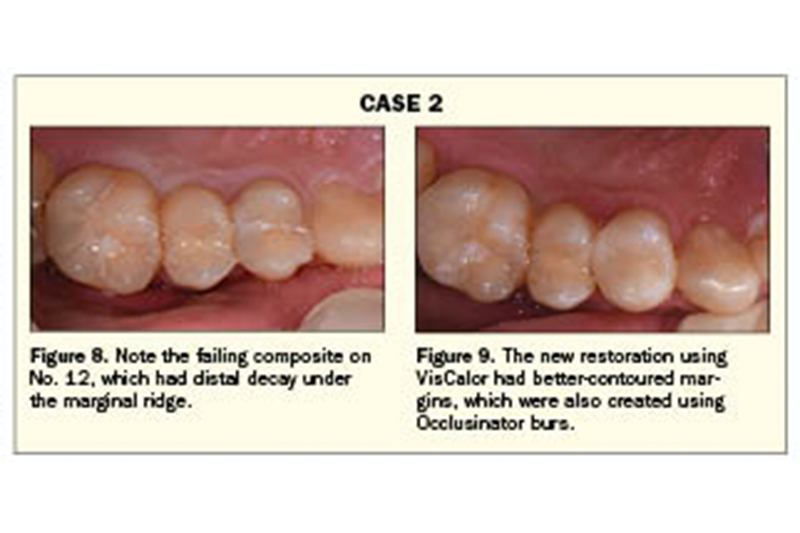
Case 3 (Class V, VisCalor bulk)
A 60-year-old male patient appeared with severe recession and decay on the buccal surfaces of teeth Nos. 19 and 20 (Figure 10). Decay was removed, and minimal preparation was done on this dentin surface. Air abrasion was used to help increase bond capabilities. Etchant was placed on the enamel surface only, and Futurabond U was placed on enamel and dentin surfaces. VisCalor bulk shade A2 was placed on the surface of both teeth. The restorations were cured with the Bluephase Style curing light and polished with polishers from the Jiffy Natural Composite System (Ultradent Products) (Figure 11).
Case 4 (Class II, VisCalor bulk)
A 65-year-old male patient appeared with recurrent decay and fractures on teeth Nos. 2 and 3 (Figure 12). Restorations were removed from No. 3 MODL and No. 2 OL. Decay was excavated. The teeth were etched and bonded with Futurabond U after Composi-Tight 3D Fusion sectional matrix systems, bands, and wedges were placed. VisCalor bulk (Universal shade) was placed, and the restoration was shaped and polished with Occlusinator burs and Jiffy Polishers (Figure 13).
Case 5 (Full Facial Bond, VisCalor)
A 20-year-old patient with a cleft palate appeared with badly splayed teeth after orthodontic bands were removed (Figure 14). The patient agreed to 4 veneers for financial reasons. The patient was very happy with the veneers, but it appeared that No. 11 did not match well due to color and angulation issues (Figure 15). A decision was made to temporarily bond No. 11 until the patient was ready to have a veneer placed. A full facial bond using VisCalor shade B1 was placed in less than 10 minutes and then shaped using Super-Snap disks (Shofu Dental) and OneGloss polishers (Shofu Dental) (Figure 16). The patient was thrilled with the result that took less than 30 minutes to achieve. The restoration was placed free of charge to the patient (Figure 17).
Case 6 (Post-Core, VisCalor)
A 40-year-old female patient had root canal treatment on tooth No. 30 (Figure 18). A post and core and future crown were planned. The temporary filling and cotton were removed. A Flexi-Post #1 (Essential Dental Systems) was placed into the wide distal canal and cemented with RelyX Unicem 2 (3M). The access hole was etched (Ultra-Etch) (Figure 19) and treated with Futurabond U. VisCalor shade OA2 was placed in the access hole (Figure 20). The patient will be returning to place a crown on the tooth (Figure 21). Note that the long, thin compule tip allowed the material to go deep into the prep, reducing potential bubbles.
CONCLUSION
Thermo-viscous technology and the 2 VisCalor materials represent a potential paradigm shift in restorative dentistry. A material that transforms from a flowable to a sculptable composite alleviates the need to have 2 different materials for a single restoration. This product can conceivably be used for every class of restoration from Class I to Class V to post and cores and even full facial bonds. One of the obvious benefits is the speed at which restorations can be completed and the efficiency of the technique. Although there is a small learning curve in using the VisCalor Dispenser, this is outweighed by the eventual joy that comes with mastering a new technique (frankly, dentists love gadgets, and this is a pretty cool one).
REFERENCES
1. Jin MU, Kim SK. Effect of pre-heating on some physical properties of composite resin. J Kor Acad Cons Dent. 2009;34(1):30-37. doi:10.5395/JKACD.2009.34.1.030
2. Draughn RA. Effects of temperature on mechanical properties of composite dental restorative materials. J Biomed Mater Res. 198;15(4):489–95. doi:10.1002/jbm.820150405
3. Elkady YA, Abdalla AI, Hasan MM. The effect of preheating and flowable composite on the marginal integrity of class II composite resin restorations. IOSR-JDMS. 2020;19(8):6-15.
4. Brady LA. Composite warmers: The key to success in direct composites. Webinar. CDE World, 2018.
5. AdDent Inc. Calset warmer for composites.
6. VOCO Dental. Bulk fill made easy.
ABOUT THE AUTHOR
Dr. Auster received his DMD degree from the University of Pennsylvania School of Dental Medicine. He continues 10 years in leadership positions at the American Academy of Cosmetic Dentistry and is currently its professional education chair for 2022. He is founder and past president of the Greater New York Academy of Cosmetic Dentistry. He takes great pride in completing 11 years of volunteer dentistry in Jamaica. Dr. Auster is a Fellow of the International College of Dentists and the American College of Dentists. He is a Dawson Academy Scholar and has received an ADA Certificate of International Voluntary Service. He has published dozens of articles in dental publications. Dr. Auster lectures internationally and is proud to be a speaker for Catapult Education. He continues 30-plus years of cosmetic and reconstructive dentistry in Pomona, NY. He can be reached at drpauster@gmail.com.
Disclosure: Dr. Auster received an honorarium from VOCO for this article and has received honoraria from Occlusinator, Ultradent Products, and Tokuyama in the past.



